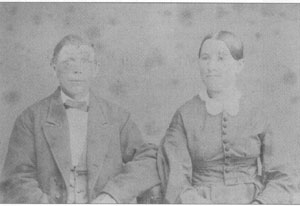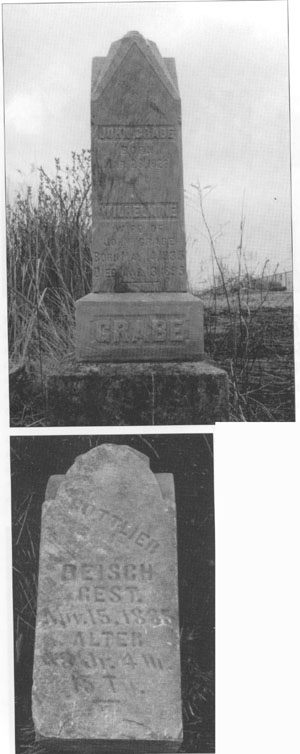 |
Home | Search | Browse | About IPO | Staff | Links |
 |
Home | Search | Browse | About IPO | Staff | Links |
|
SPECIAL FOCUS From Human History to Natural History The Forest Preserve District of Will County safeguards a small plot of cultural heritage amid rapid development in Naperville BY bruce hodgdon  The small, one-acre cemetery could be the only acre in all of (Will) county that was not at one time farmed, grazed, or in some way disturbed by human activity. When the Forest Preserve District of Will County acquired the Vermont Cemetery, in Naperville, last year, it did so because of the unique flora that grows on the site. The small, one-acre cemetery could be the only acre in all of the county that was not at one time farmed, grazed, or in some way disturbed by human activity. Because of the efforts of Dr. Robert Betts, who served as caretaker of the property for decades, and the National Land Institute, which fenced in the cemetery to protect it, the district acquired a natural site whose vegetation was much the same that pioneers first found in Will County more than a century and a half ago. Most interesting is that the cemetery stands 12 to 18 inches above the surrounding farm field, illustrating all the top soil that has been lost through water and wind erosion over the last 150 years. But the Vermont Cemetery also contains the remains of persons who were among the early settlers in the county, and these remains are of particular importance to Joyce Koretke, of Naperville, and John Hafenmichter, of Sandwich. Koretke’s great-grandfather is interred there, and Hafenmichter married into the same family. These two had visited the site many times in the past, but always the lush vegetation hid all that was at ground level. So they were particularly interested when the Will County Forest Preserve District burned the cemetery in early fall to foster new growth next spring. This would be the first time they would be able to discover grave markers hidden beneath the thick plant growth. What they found was remarkable. About 25 stones were uncovered by the fire, scattered randomly around the cemetery. Many were small in size, serving as headstones, and nearly all were made of sandstone. Of those, many of the inscriptions had been worn away by time. But a few of the memorials were made of granite, and their inscriptions remain clean today. One of these was the tombstone of John Book, the forebear of Koretke. The cost of his grave marker stands in sharp contrast to the more humble markers to be found throughout the cemetery. The reasons why have been collected over the years 27 | Illinois Parks and Recreation | May / June 2000 by John Hatenmichter, whose interest in local history has resulted in answers to questions that time has obscured.  Photo: Two tombstones now visible at Vermont Cemetery, owned by the Forest Preserve District of Will County. According to Koretke, John Book arrived in the area about 1847. He was not among the first settlers—that distinction went to Joseph Naper, who put down roots in 1831—but he established a working farm that led to a good degree of family prosperity. But many of those buried at the site, Hatenmichter speculates, were itinerant laborers; their gravestones were made of the inexpensive sandstone. In fact, Hatenmichter believes, the name Vermont Cemetery—called that since the 19th century—was the designated resting place for a contingent of settlers and laborers who originated from Vermont. Hatenmichter’s research has shown that the original pioneers to the area, dating to the 1830s, settled in four primary groups, according to national origin. Each had its own church, which was ministered to by a single, itinerant preacher who would make the rounds from congregation to congregation. The bodies lying in the Vermont Cemetery, Hatenmichter found, were of the Wheatland Congregation. These were largely immigrants from Germany, and a few of the readable grave markers contain Biblical passages in German. Joyce Koretke says that her great grandfather was born in Germany in 1803 and died in 1873. Lying next to him is his second wife, Margaret, 13 years younger than he; she would survive him by 13 years. Hatenmichter believes there are other grave markers buried beneath the topsoil, a reasonable speculation. The property all around the cemetery has been farmed for more than 150 years, and the dust constantly kicked up would settle over the headstones lying flat on the ground, depositing a layer of soil over them. But these buried sites will in all probably be lost to time. The Vermont Cemetery has been designated a nature preserve because of its native flora, giving the preserve the highest form of protection. However, that very protection will assure that those whose remains lie within this special one acre of property will be safeguarded in perpetuity. These people, if they were to come back today, would be astonished at how the Naperville area has been changed by modern development. But they would readily recognize the array of plants that surround them. This would tie their very different era to our own. Bruce Hodgdon is the media liaison for the Forest Preserve District of Will County. 28 | Illinois Parks and Recreation | May / June 2000 |
|
Sam S. Manivong, Illinois Periodicals Online Coordinator |